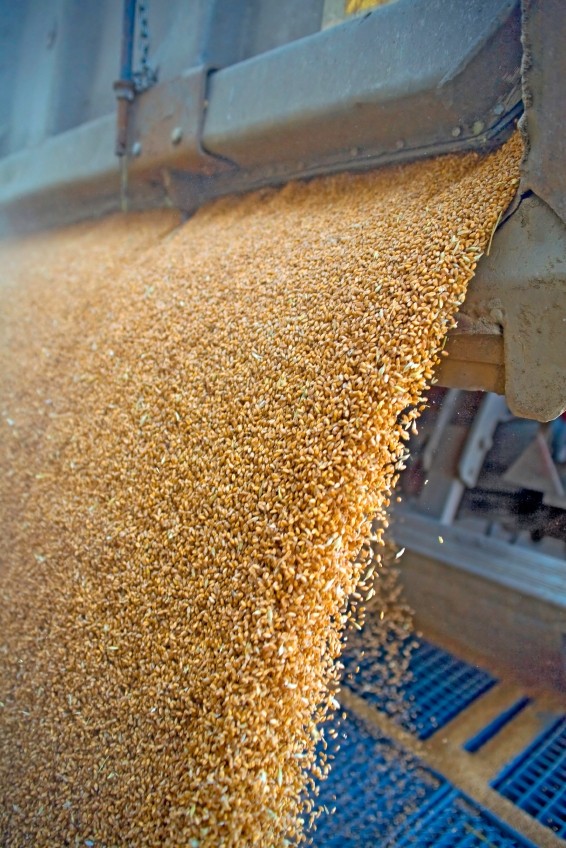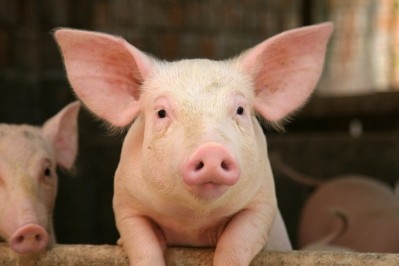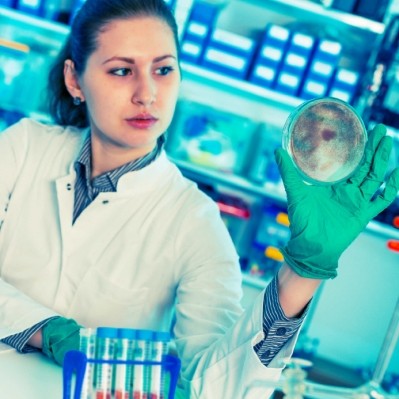Kansas feed mill seeks PEDV solutions

The work at the OH Kruse Feed Technology Innovation Center at Kansas State University includes studying the transmission and mitigation of diseases like the porcine epidemic diarrhea virus (PEDV), said Cassandra Jones, assistant professor of grain science and industry.
With the confirmation that feed can be a potential vehicle to transmit PEDV, the group has been looking at how long contamination stays in a feed mill and the effect of treatments or pelleting the contaminated feed.
“We wanted to be able to do research to provide industry some answers on what can we do to prevent this,” she told FeedNavigator. “Or, if it does occur, to destroy it, so the viral particles are no longer harmful.”
Disease transmission
Pigs get sick when they consume fecal matter containing the virus, said Jones. There are several ways that fecal contamination can occur, including through foot traffic or that livestock trailers used to move infected pigs carry residual, contaminated fecal matter.
Another transmission method is through feed, and though it is unlikely that feed would be contaminated with fecal matter, it remains a possible pathway for transmission, she said. “Fecal matter can contaminate feed through three main methods of entry – ingredients, environment, or people,” she added.
“It’s unlikely that fecal matter would contaminate feed in the first place – it certainly is not the primary route of entry,” she said. “But many facilities had enforced such stringent biosecurity requirements to keep PRRS out of their systems that other sources of potential fecal contamination were minimized – leaving feed as one of the only possible routes of transmission.”
If the contamination occurs, it does not take a large account of fecal matter to cause a problem, she said. One gram of virus-carrying fecal matter has enough of the disease to infect about 500 tons of feed to a level that would make pigs eating the feed sick.
Current experiments
The feed mill and research facility is the only one of its kind in the world, said Jones. The feed safety research section of the facility has the ability to manufacture feed and has a biosafety level 2 rating. It shares a wall with the regular feed mill, but can be completely sealed.
The building allows for a next step up in research size from work done in a laboratory, she said.
The work has given university researchers the opportunity to collaborate with experts in other fields and at other universities, she said. “There are not a lot of experts in feed viruses because we’ve never had viruses in feed before,” she added.
The projects done with PEDV have looked at different areas for containment, she said including exclusion and prevention.
“Prevention, that’s where a lot of our research is occurring,” she said. “There are things we can do to prevent the feed or the environment from catching the virus in the first place.”
The work has included examining the use of different chemical mitigates and medium chain fatty acids in feed as ways to reduce the susceptibility or post process contamination, she said. Different treatments can mean that grain is less likely to carry the disease, or may reduce the amount of time it is contaminated.
Another method that shows promise is pelleting the feed, she said. But, feed has to be heated to at least 130 degrees Fahrenheit for at least 45 seconds, which can be difficult at the start of the pelleting process or if the feed plugs the system.
In those situations, it may be worth considering a rework bin to isolate feed that doesn’t get the heat treatment for a long enough time, she said, so that it can be reprocessed later.
But the recommendation can be to use as many controls as possible, starting with controlling the larger issues first, she said. “Put in a biosecurity plan, verify suppliers, and control ingredient movement and people in the facility to prevent it interacting,” she added.
The group also tested the effectiveness of flushing or sequencing a mill to remove contamination after an infected batch of feed is processed, Jones said. The goal was to find, if possible, a best practice to handle contaminated or high-risk feed.
“We ran a normal batch of virus-free feed, then we inoculated a batch of feed, mixed that in a mixer and pushed it through conveyers, and took samples from the mixer, and bucket elevator, and tested four batches of virus-free feed,” she said. “If we know a batch of feed contains PEDV, how long does it take to get it out of the system? How long does it take to get it out of the facility?”
Although batches of feed processed stopped having samples test positive for the virus after the second load, environmental samples continued to show its presence for all four loads, she said. “That dust on the bucket elevator belt, and the metal, and surfaces in the feed mill, that dust still carries the virus.”
Decontamination and facility details
The facility is approved to work with three different pathogens, said Jones. These include enterococcus faecium, the porcine epidemic diarrhea virus (PEDV) and salmonella enteritidis.
“The reason the facility was designed was under the containment conditions we could inoculate feed with pathogens or biological hazards,” she said.
When research on one is being conducted the entire three-story structure can be sealed and work as a safety facility, she said. In that mode, the building has negative air pressure, and researchers have to “shower out” so they don’t risk taking traces of the pathogen out of the building.
After the research is completed, the entire building has an elaborate decontamination period, she said. It is physically and chemically cleaned, and then heated to 140 degrees Fahrenheit for a period of at least 48 hours. The process causes the building to grow six inches, she added.
Future research
Experiments regarding PEDV haven’t ended for the facility, said Jones. The group is in the process of designing future work looking at how to handle infected dust in feed mills.
“Our interest moving forward, and we feel our responsibility, is to look at the infectivity of the dust,” she said. “Can just the dust cause a PEDV outbreak and be infectious? And, if so, how can we manage dust?”
Other projects coming up include work with a strain of salmonella and tracing pathways, she said.
“Five years ago we didn’t understand that feed could be a vector for virus,” she added. “Now it’s our responsibility to expose these [graduate] students to this level of research because they’re going to be the future researchers to prevent spread of disease through those vectors and to stop it.”







